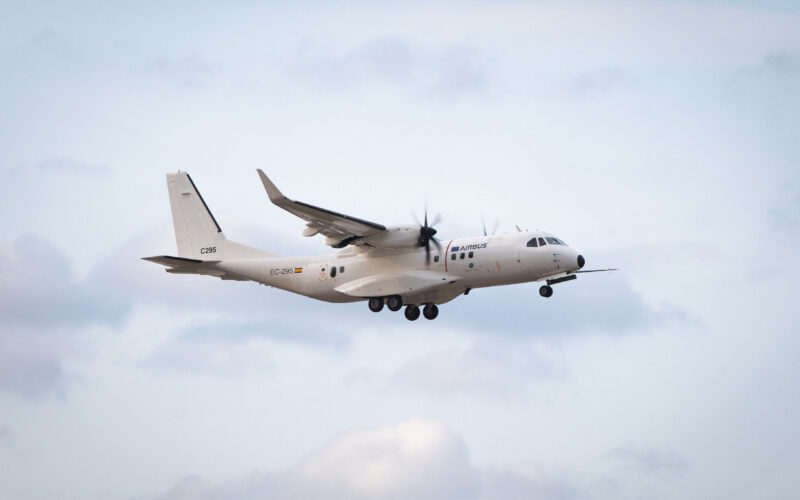The Airbus C295 Flight Test Bed 2 (FTB2) has successfully performed its first flight from the final assembly line in Seville, Spain.
The maiden flight marks the start of a flight campaign, which intends to test the new semi-morphing wing, the new flight control system, as well as a SatCom antenna embedded within the aircraft’s fuselage.
The new modifications are bound to bring improvements to operational aspects of the aircraft, and help to introduce new improvement to the design and manufacturing process.
“The first flight of the C295 FTB2 is a key milestone that represents an important step forward in the program, following the successful integration of the new aero structures, power-on and ground tests,” said Francisco Javier Sánchez Segura, Executive Vice President Engineering Airbus Defense and Space.
Airbus #C295 #CleanSky2 Flight Test Bed 2 (FTB2) successfully performed its maiden flight
The aim of the FTB2 is to achieve a more sustainable aviation, by reducing the noise, CO2 and NOx levels. #sustainability
Learn more: https://t.co/mXQpaYFhVX pic.twitter.com/WiRH1niY8u— Airbus Defence (@AirbusDefence) January 26, 2022
According to Airbus, the new C295 FTB2 flight control system leverages digital control systems to improve the aerodynamic shape of the wing during flight, “while a new multifunctional flap has been completely redesigned and includes flap tabs in the trailing edge controlled by electro-mechanical actuators”.
“With these technologies applied in a future regional multi-mission configuration, up to 43% CO2 and 70% NOx reductions can be achieved in a typical Search and Rescue mission of 400 nautical miles, as well as 45% less noise during take-off,” according to Airbus.
The Flight Test Bed 2, based on Airbus C295 aircraft, is an in-flight demonstrator of the European Clean Sky 2 (CS2) and the EU Horizon 2020 research and innovation program. Clean Sky is a partnership between the European Commission and the EU aviation industry that coordinates and funds research activities to deliver quieter and more environmentally friendly aircraft.
“A few years ago, this program was just a dream of a more sustainable future for aviation. Today we are at the final stage, and we finally made it fly,” Segura added.

